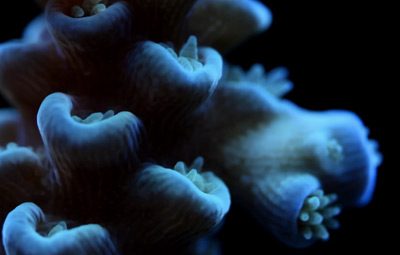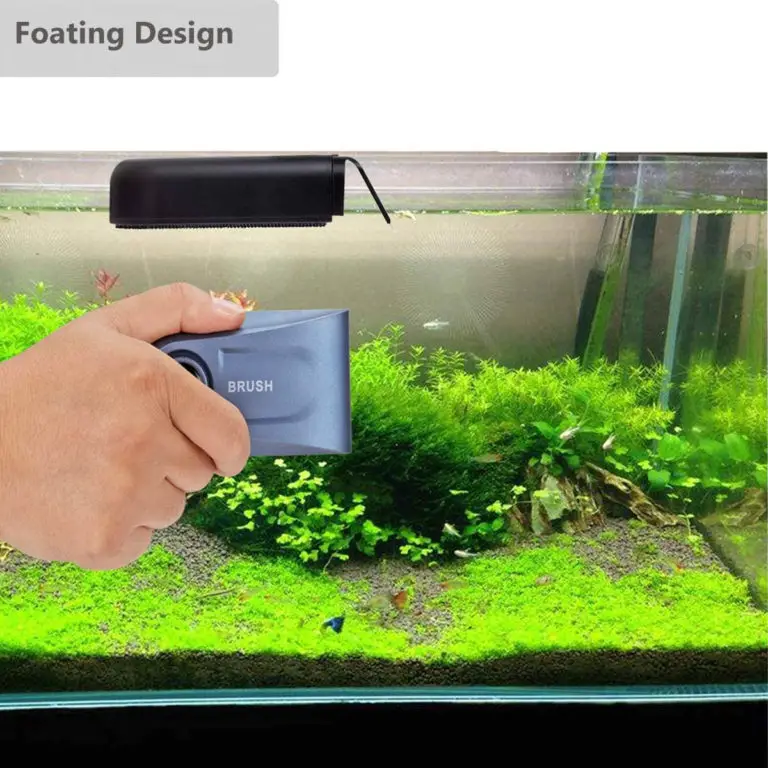How to Maintain Alkalinity in Reef Tank?
A reef aquarium is a unique and fragile ecosystem. In order to maintain the delicate balance of this system, it is important to keep the water parameters within a certain range. One of the most important factors in a reef tank is alkalinity.
Alkalinity is a measure of the carbonate and bicarbonate ion concentration in the water and plays a vital role in maintaining pH levels. If alkalinity levels drop too low, it can lead to a sudden and drastic decrease in pH, which can be fatal for your fish and corals.
- The most important things to remember about maintaining alkalinity in a reef tank are: 1
- Test the water regularly and take steps to maintain a stable pH
- Use a quality salt mix that contains all the necessary minerals and trace elements for coral growth
- Add calcium and other supplements as needed to maintain proper alkalinity levels
- Keep up with regular water changes to remove impurities from the water
New concept in reef tank Alkalinity: How it works & how to gain 70% or more coral growth!
Ideal Alkalinity for Reef Tank
Alkalinity is one of the most important chemical parameters in a reef aquarium. It is a measure of the ability of water to resist changes in pH, and it is also a measure of the buffer capacity of the water.The ideal alkalinity for a reef tank is between 2.5 and 3.5 meq/L.
This range will provide enough buffering capacity to resist changes in pH, while still allowing for some fluctuation. Alkalinity levels outside of this range can be problematic, causing rapid fluctuations in pH which can stress or even kill delicate corals and other invertebrates.
What Causes Alkalinity to Drop in a Reef Tank?
If you’ve ever wondered why your reef tank’s alkalinity seems to be constantly dropping, even though you are dutifully adding two-part calcium and alkalinity supplements every week, here’s the likely explanation: corals and other invertebrates.When these animals excrete waste or release toxins, it causes the alkalinity in the water to drop. In a closed system like a reef tank, this can happen quickly and lead to serious problems for your livestock if left unchecked.
The good news is that there are several things you can do to help stabilize your tank’s alkalinity levels. First, make sure you are using high-quality supplements that are properly balanced for your aquarium size and stocking level. Second, consider using an automated dosing system that can help keep your levels consistent even when they fluctuate.
Finally, pay close attention to your coral growth rates and adjust your supplement regimen accordingly. With a little effort, you can keep your reef tank’s alkalinity levels stable and ensure the long-term health of your beloved corals and other invertebrates!
Effects of Low Alkalinity in Reef Tank
Aquariums are delicate ecosystems and even a small change can have a big effect on the health of your tank. Alkalinity is one of the most important water parameters to maintain in a reef aquarium because it helps to stabilize pH levels. If alkalinity levels drop too low, it can cause problems for both fish and coral.
Coral rely on calcium carbonate to build their skeletons and if alkalinity levels drop, they will start to dissolve. This not only harms the coral, but can also cause the water quality in your tank to decline rapidly. Fish are also affected by low alkalinity because it makes it harder for them to breathe.
Ammonia and nitrites become more toxic at lower pH levels and can quickly kill fish if not properly monitored. There are a few things you can do to raise alkalinity levels in your reef tank. First, check your equipment to make sure everything is functioning properly.
Second, add some crushed coral or oyster shell into your filter media.
What Does Alkalinity Do in a Reef Tank?
Alkalinity is one of the most important water parameters in a reef aquarium. It is a measure of the carbonate and bicarbonate ion concentration, and it helps to buffer the pH of seawater. A high alkalinity means that the water can resist changes in pH, which is essential for maintaining a stable environment for delicate reef organisms.
Alkalinity also has an important role in calcium uptake by corals. Corals use calcium to build their skeletons, and they need a certain amount of alkalinity in order to absorb it effectively. If the alkalinity levels in your aquarium are too low, your corals will not be able to grow properly.
Maintaining proper alkalinity levels is essential for a healthy reef aquarium. Use a reliable test kit to regularly check the alkalinity of your tank water, and make adjustments as needed to keep it within the ideal range for your particular livestock.
How to Increase Alkalinity in Reef Tank?
If you want to maintain a healthy reef tank, it’s important to keep the alkalinity levels in check. Alkalinity is a measure of the water’s ability to neutralize acids, and it’s an important factor in maintaining the proper pH balance for your fish and corals.There are a few ways to increase alkalinity in your reef tank.
One is to add crushed coral or oyster shell grit to your filter media. This will help raise the alkalinity over time as the water filters through it. You can also add commercial products that are designed to raise alkalinity levels, such as baking soda or calcium carbonate powder.
Another way to raise alkalinity is by doing partial water changes with water that has a higher alkalinity than what’s currently in your tank. When you make these changes, be sure to mix the new water with the old water before adding it into your tank so that there isn’t too much of a sudden change.Keep an eye on your pH levels and test them regularly using a reliable test kit.
If you notice that they’re starting to drop, this is an indication that your alkalinity levels may be getting too low and you’ll need to take action accordingly.
How to Lower Alkalinity in Reef Tank?
If you have a reef tank, you know that alkalinity is an important part of water quality. Alkalinity helps to maintain pH levels and provides a buffer against changes in pH. However, if alkalinity gets too high, it can be detrimental to your reef tank.There are a few ways to lower alkalinity in your reef tank.
One way is to do partial water changes more frequently. You can also add chemicals such as phosphoric acid or sulfuric acid to lower the alkalinity. Finally, you can use reverse osmosis or deionization to remove excess alkalinity from your water.
It’s important to test your water regularly to make sure that alkalinity levels are where they should be. If you see a sudden increase in alkalinity, take action immediately to avoid harming your reef tank inhabitants.
What Causes High Alkalinity in Reef Tank?
An alkalinity test measures the level of carbonate and bicarbonate in your reef tank water, which helps to keep the pH stable. Alkalinity is typically measured in parts per million (ppm) or milligrams per liter (mg/L). The ideal alkalinity range for a reef tank is between 2-3 meq/L, which is equivalent to 7-10 dKH.
There are a few things that can cause high alkalinity in a reef tank. One common cause is overfeeding, which can lead to an increase in dissolved organic compounds (DOCs) and phosphate levels. DOCs and phosphate can interact with carbonates and bicarbonates, causing them to precipitate out of solution and raise the alkalinity.
Another possible cause is using tap water that has high alkalinity, which can happen if your municipality adds calcium carbonate to the water supply. If you suspect that either of these might be the cause of high alkalinity in your reef tank, you should take steps to correct the problem. Overfeeding is one of the most common causes of high alkalinity in reef tanks.
When fish are overfed, they release excess nutrients into the water, which can interact with carbonates and bicarbonates, causing them to precipitate out of solution. To avoid this problem, only feed your fish as much as they can eat in a single sitting. If you’re not sure how much to feed them, ask your local fish store or veterinarian for guidance.
Another possible cause of high alkalinity is using tap water that has been treated with calcium carbonate. This happens in some municipalities where calcium carbonate is added to the water supply to improve its taste or hardness. If you use tap water in your reef tank, check with your municipality to see if it’s treated with calcium carbonate.
If it is, you may need to use reverse osmosis or deionization filters to remove it from your water before adding it to your tank. If you have high alkalinity in your reef tank, there are a few things you can do about it. First, check your feeding habits and make sure you’re not overfeeding your fish.
Second, if you use tap water, find out if it’s treated with calcium carbonate and filter it accordingly. Lastly, consider using chemical filtration media such as sodium polystyrene sulfonate (SPS) beads or activated charcoal, which can help remove dissolved organic compounds and phosphates from your water.
Calcium in Reef Tank
It is no secret that calcium is one of the most important elements in reef aquariums. This essential element helps maintain the structural integrity of coral skeletons and provides many other benefits to reef inhabitants. The vast majority of captive reefs are supplemented with some form of calcium, whether it be in the form of a two-part additive or via another method.
However, there are still many misconceptions about calcium and its role in reef tanks. In this article, we will dispel some common myths about calcium and provide some tips on how to maintain proper levels in your reef tank.One common misconception about calcium is that it needs to be added to reef tanks on a regular basis.
While it is true that most reefs need supplemental calcium, it is not necessary to add it every day or even every week. In fact, unless your tank has high demand or you are constantly removing corals, adding calcium once a month should be sufficient. It is also important to test your water regularly to ensure that levels are where they should be.
If you find that your levels are low, simply add enough two-part solution (or other supplement) to bring them up to par. Too much calcium can be just as detrimental as too little, so don’t overdo it!Another myth about calcium is that it can only be added via two-part solutions or similar additives.
While these methods do work well, there are other ways to raise calcium levels in your tank if you so choose. For example, you can use calcareous substrates such as aragonite sand or crushed coral gravel . These materials slowly release calcium into the water over time which can help raise and maintain desirable levels without having to add anything directly to your tank water.
Just keep in mind that using these substrates will likely increase your pH as well since they contain carbonate (which we’ll talk more about later).If you decide to use a substrate for raising calcium levels , make sure you do not vacuum it during routine maintenance as this will remove any beneficial effect it may have had . Another alternative method for raisingcalcium involves using kalkwasser , which is basically just concentrated lime water .
This method works by slowly dissolving kalkwasser into your aquarium’s top off water which then raises overall concentrations throughout the system over time . Some hobbyists swear by kalkwasser while others find it difficultto control – so ultimately it comes down personal preference . Whatever method(s) you decide tomaintain proper calcium concentration s in your system , just remember t o test regularlyand don’t go overboard !

Credit: reefprostore.com
Why Does My Alkalinity Keep Dropping Reef Tank?
If you’ve been noticing that your alkalinity has been dropping in your reef tank, there are a few potential causes. First, let’s review what alkalinity is and why it’s important for a reef tank. Alkalinity is a measure of the water’s ability to resist changes in pH. In other words, it helps to stabilizes the pH of your reef tank water.
A stable pH is essential for the health of your corals and other invertebrates because sudden changes in pH can be very stressful (and even deadly) for them.There are a few things that can cause alkalinity to drop in a reef tank. One common culprit is evaporation.
As water evaporates from your tank, it leaves behind all the dissolved minerals and compounds, including those that contribute to alkalinity. So, if you’ve noticed an uptick in evaporation lately (perhaps due to warmer temperatures), that could explain why your alkalinity has been dropping.Another possible cause of low alkalinity is excessive coral growth.
Corals are made up of calcium carbonate, which dissolves in seawater and contributes to its alkalinity. So, as corals grow and add more calcium carbonate to the water, they can actually lower thealkalinity levels over time. This isn’t necessarily something to worry about though – as long as you’re regularly monitoring your water parameters and taking steps to maintain stability, small fluctuations like this shouldn’t pose any threat to your tank inhabitants.
Finally, another possible reason for falling alkalimity levels is simply old age – as saltwater ages, it slowly loses its dissolved minerals (including those responsible for maintaining alkality).
What Consumes Alkalinity in a Reef Tank?
Alkalinity in a reef tank can be consumed by many different things. The most common consumption is from the growth of corals. As corals grow, they use up alkalinity to help build their skeletons.
Other common consumptions of alkalinity can come from the addition of acids to the water, such as from vinegar or lemon juice. Additionally, some chemicals used in reef tanks (such as those used to control algae growth) can also consume alkalinity.It’s important to keep an eye on the alkalinity levels in your reef tank, as too much or too little can both have negative impacts on coral health and water quality.
If you suspect that your alkalinity levels are off, it’s best to test the water and then take appropriate measures to adjust them accordingly.
What Do I Do If My Alkalinity is Low in My Reef Tank?
If your alkalinity is low in your reef tank, there are a few things you can do to raise it. Alkalinity is important for the health of your reef, as it helps to maintain pH levels and provides a buffer against changes in pH.One way to raise alkalinity is to add crushed coral or shells to your aquarium.
This will release calcium carbonate into the water, raising alkalinity levels. You can also add commercial products designed to raise alkalinity, such as those based on sodium bicarbonate.Another way to raise alkalinity is to simply do regular water changes and top off your aquarium with fresh saltwater.
Over time, this will slowly raise the alkalinity of your tank as fresh water has a higher alkalinity than aged aquarium water.Whatever method you choose, be sure to test your aquarium’s water regularly and make adjustments as needed.
Does Alkalinity Fluctuate in Reef Tank?
The alkalinity in a reef tank can fluctuate for a variety of reasons. Some of the most common causes are changes in pH, changes in the amount of dissolved organic matter, and changes in the carbonate buffering system.Alkalinity is a measure of the ability of water to resist changes in pH. The higher the alkalinity, the more resistant the water is to changes in pH. In a reef tank, alkalinity is important because it helps to maintain a stable pH. A fluctuating alkalinity can cause problems with coral growth and fish health.
There are several ways to test for alkalinity. The most common method is to use an aquarium test kit that measures total alkalinity (TA). This type of kit will give you a reading in parts per million (ppm) or milligrams per liter (mg/L).
Another way to test for alkalinity is by using a drop-checker. This device contains a solution that turns blue when it comes into contact with water that has a high alkalinity.If you notice that the alkalinity in your reef tank is fluctuating, there are some things you can do to correct the problem.
One option is to add more live rock to your tank. Live rock contains calcium carbonate, which will help to raise the TA levels. Another option is to use a product like Seachem Reef Buffer, which will also help to raise TA levels.
Conclusion
Maintaining alkalinity in a reef tank is important for the health of your coral and other marine life. There are a few ways to test and adjust alkalinity levels, including using a refractometer or an electronic pH monitor. The ideal range for alkalinity is between 8-12 dKH (degrees Kelvin).
There are several methods for raising or lowering alkalinity levels in your reef tank. One way is to add baking soda (sodium bicarbonate) to raise the alkalinity, or vinegar (acetic acid) to lower it. Another method is to use commercial products designed specifically for adjusting aquarium pH and alkalinity.





